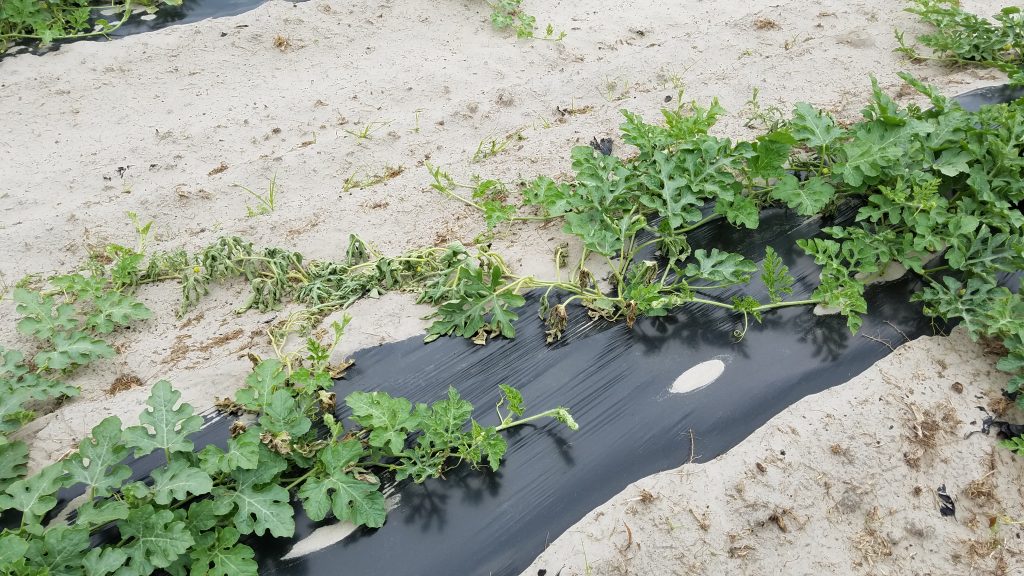By Clint Thompson
It wasn’t ideal conditions for most watermelon diseases this spring. But one pathogen preferred the cool temperatures.

Fusarium wilt, the disease that can cause plant death if the infection is severe enough, has been spotted throughout Florida and in the South Georgia production region, said Josh Freeman, University of Florida/IFAS Associate Professor in Horticultural Science. The cooler spring temperatures are the main reason why.
“Over the last six or seven years, our research has showed us that cooler temps tend to accentuate fusarium. Not that when we get warm temps, you can’t get it, but it tends to be when we have cool springs and cool soil temperatures that we see more fusarium,” Freeman said. “That makes sense. We had a cool spring, for the most part, and wetter soils than normal. Cool and wet seems to be a trigger for the fusarium species that causes wilt in watermelons.
“We saw that everywhere, all the way down to Levy County, Florida, up through the Suwannee Valley and into South Georgia. We’ve got some work with Bhabesh (Dutta) up in Crisp County and they’ve seen more this year than I guess is normal.”
The plant can produce fruit if the infection is weak, but when it begins using the energy necessary to produce fruit, the plant will likely decline and slowly die.
Management?
“I don’t feel like we’re making really great strides on fusarium, if we’re being honest. We’ve been having years and years of work looking at fumigation, looking at fungicides and we still don’t have anything that we can push forward to growers and be like, ‘Here, do this and be successful,’ other than grafted plants,” Freeman said.
Get more information here about fusarium wilt disease.









